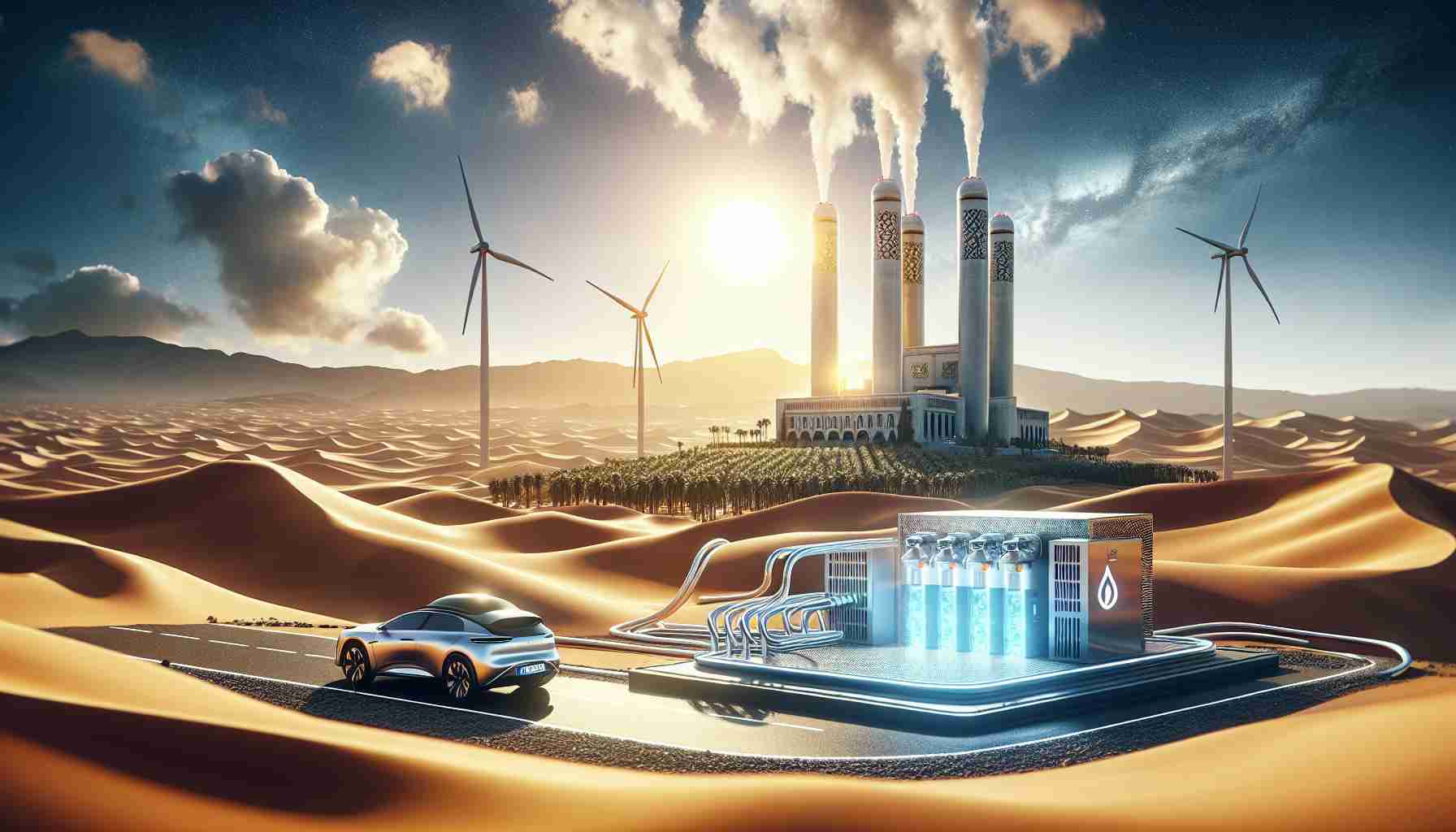- H2 Global Energy plans to establish a cutting-edge green hydrogen and ammonia plant in southern Morocco, targeting a production of one million tonnes of green ammonia annually.
- This initiative positions Morocco as a leading player in renewable energy and green hydrogen production in the region.
- Discussions between H2 Global and Moroccan authorities highlight a commitment to regulatory support and investment strategies.
- The project is anticipated to drive job creation and economic growth while meeting sustainable development goals.
- Morocco’s ample solar and wind resources will be harnessed, benefiting various sectors including agriculture and energy storage.
- The venture has potential for exporting clean energy to European markets focused on emissions reductions.
In a groundbreaking announcement, H2 Global Energy has unveiled plans to create a state-of-the-art green hydrogen and ammonia plant in southern Morocco, poised to produce an astonishing one million tonnes of green ammonia each year. This ambitious project is set to launch Morocco into the spotlight as a global powerhouse in renewable energy.
Recent discussions in Rabat between the company and key government institutions signal a strong commitment to this initiative, focusing on vital regulatory frameworks and investment strategies. Moroccan authorities reaffirmed their dedication to renewable energy and positioning the Kingdom at the forefront of green hydrogen production in the region.
The company’s vision emphasizes that this plant represents a transformational leap in Morocco’s energy journey. It aims not only to fulfill the nation’s sustainable development goals but also to fuel job creation and economic growth. Harnessing the abundant solar and wind resources of Morocco, the future facility will convert green hydrogen into ammonia, supporting sectors such as agriculture, transportation, and energy storage—each playing a pivotal role in the global fight against climate change.
Morocco’s strategic geographical location enhances opportunities for exporting clean energy to European markets, eager to adopt green hydrogen as part of their emissions-reduction strategies. This venture opens doors to a wealth of economic prospects that could reshape the North African landscape.
As H2 Global Energy steps closer to realizing this ambitious plan, the next phases will focus on securing funding and completing engineering processes. The future is bright for Morocco, and its role in renewable energy is set to shine even brighter!
Morocco’s Green Hydrogen Revolution: A Game-Changer for Global Energy
As Morocco embarks on an ambitious project to establish a green hydrogen and ammonia plant, significant developments are paving the way for a transformative energy future. Here’s a closer look at vital information surrounding this initiative, including key insights, market forecasts, and answers to pressing questions.
Key Information and Insights
– Production Capacity and Technology: The new plant is projected to have a production capacity of one million tonnes of green ammonia annually. This capacity will be achieved through cutting-edge electrolysis technology that utilizes Morocco’s abundant solar and wind resources.
– Investment and Economic Impact: The investment in this green ammonia facility is expected to generate thousands of jobs during both construction and operation phases. The project aligns with Morocco’s vision to increase the share of renewable energy to 52% of its total energy mix by 2030.
– Market Trends: The global green ammonia market is anticipated to grow significantly due to rising fiscal policies focused on reducing carbon emissions. It is estimated that by 2030, the market may reach $40 billion driven by demand for sustainable ammonia in agriculture and as a carbon-free fuel source.
– Export Potential: Given its geographical advantage, Morocco is well-positioned to export green ammonia to Europe and beyond. The European Union is actively seeking to diversify its energy sources and reduce reliance on fossil fuels, making Moroccan green hydrogen a lucrative opportunity.
– Regulatory Support: The Moroccan government is working on establishing regulatory frameworks and incentives for renewable energy investments, which will streamline the process for future developments in the hydrogen sector.
Related Questions and Answers
1. What are the environmental benefits of green ammonia production?
– Green ammonia is produced using renewable energy sources rather than fossil fuels, which drastically reduces carbon emissions. Additionally, it can be utilized as a clean fuel in shipping and transportation, helping combat global warming.
2. How will this project affect local communities in Morocco?
– The development will create jobs, invest in local infrastructure, and support various sectors such as agriculture and transportation, which will stimulate local economies and promote sustainable livelihoods.
3. What role does technology play in this green hydrogen initiative?
– Advanced electrolysis technology will convert water and renewable energy into hydrogen, which is then synthesized into ammonia. This cutting-edge technology is crucial for optimizing efficiency and reducing costs, making green hydrogen a viable energy solution.
Conclusion
Morocco’s investment in a green hydrogen and ammonia plant reflects a broader trend toward sustainable energy solutions, positioning the country as a leader in renewable resource production. With strategic support from the government and technological advancements, this initiative is poised to significantly impact both local and global energy markets.
For more information, check out H2 Global Energy and stay updated on the latest developments in renewable energy initiatives.

